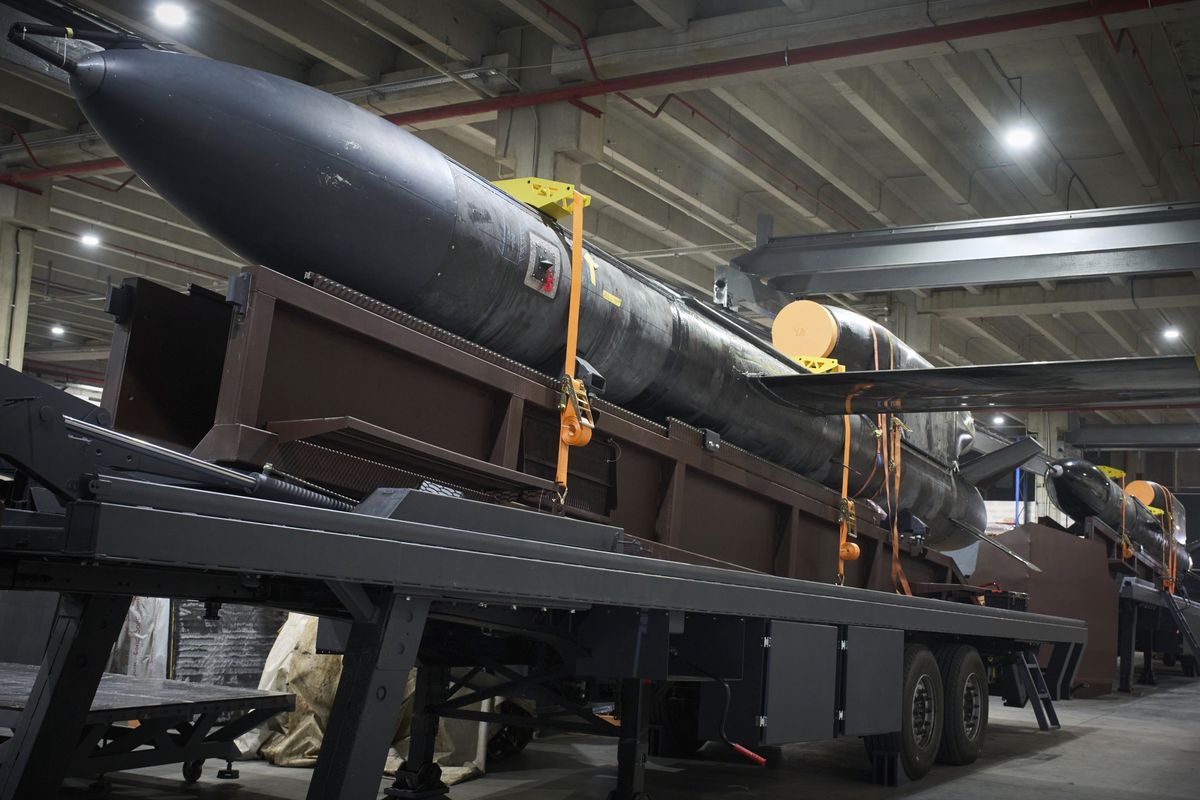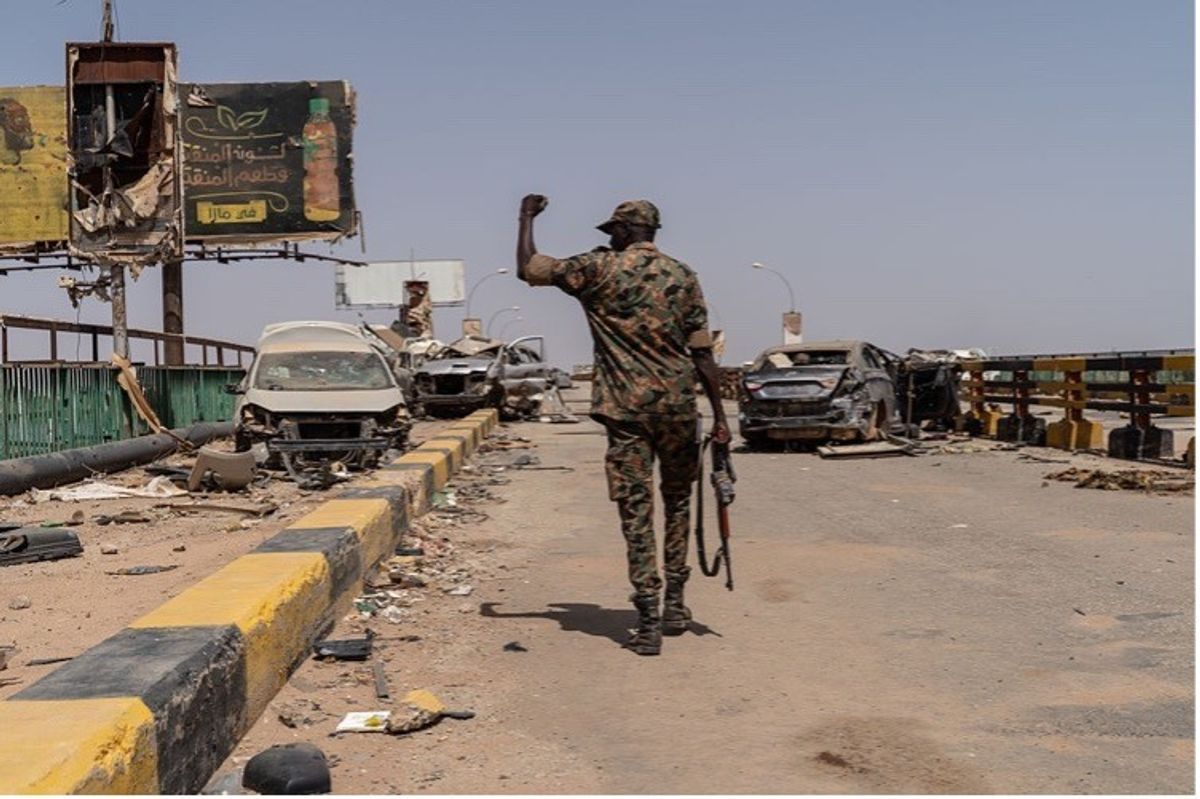DEEP DIVE — Nearly three years into its costly war against Ukraine, Russia’s economy is faltering under the strain of sanctions, inflation, and high borrowing costs. While Western hopes that the sanctions would bring economic collapse proved premature, the cumulative toll is now evident.
After an initial wartime boom driven by defense spending, nearly every metric now suggests trouble for the Kremlin – from a drop in economic growth to a spike in inflation to a plunge in the value of the Russian ruble. All are related, and all add up to a problem for Russia as the Kremlin continues to pour money into the war effort.
“Russia's in a weakened position,” Kurt Volker, a former U.S. Ambassador to NATO, told The Cipher Brief. “They have high inflation…and they've pressed so many people into the conflict in Ukraine that they don't have the labor force at home to staff out the economy, as well as the defense industries that they need.”
A critical question for Russia in 2025 is whether the mounting financial pressures will force Moscow to confront the limits of its economic and military endurance.
“Putin is weaker than he has ever been,” Rob Dannenberg, a former chief of the CIA’s Central Eurasia Division, wrote last week in The Cipher Brief.
“You would never guess this from his actions and the noise from his fellow travelers, but it is true,” Dannenberg wrote. “Russia’s economy is buckling under inflation, ruble depreciation, high interest rates and a lack of foreign investment. Not to mention brain drain and a stretched workforce with so many casualties from the war.”
By the numbers, a bad year ahead
It’s hard to find a silver lining for Russia in the economic forecast for 2025. Growth is set to fall from an estimated 4% in 2024 to just 0.5% in 2025; despite Kremlin efforts to curb price hikes, the latest figures show inflation hovering at around 9%, and some experts believe the true figure is higher (Volker, the former Ambassador to NATO, thinks it’s closer to 30 %); and the Russian central bank has raised a key interest rate to 21% to combat the rising prices. Meanwhile, the Russian ruble’s sharp depreciation – it has lost more than 20% of its value against the dollar in the past year — has eroded purchasing power and increased import costs. Revenues from oil exports, a cornerstone of Russia’s economy, have also declined, with prices dropping below $65 per barrel.
The cumulative impact of Western sanctions is increasingly apparent. Investment in Russia is shrinking, credit is tightening, and rising bankruptcies threaten key sectors including agriculture. Moreover, half of Russia’s foreign reserves are frozen, and liquid reserves in the National Wealth Fund have declined from $117 billion in 2021 to $31 billion.
All the data – current statistics and forecasts alike – pose a series of challenges for the Kremlin, and one critical choice involving the war against Ukraine: should Russia continue pouring money into the war, and risk exacerbating many of these problems; or tighten the financing spigot and risk hampering the war effort?
For now, few doubt where Russian President Vladimir Putin stands on the question. As Howard Shatz, a Senior Economist at RAND, put it bluntly in an interview with The Cipher Brief: “The Kremlin will prioritize the war – until it can’t.”
Russia’s war economy – and the stresses on the system
Since the February 2022 invasion of Ukraine, Russia’s war-driven economy has prioritized defense spending above all else. Military expenditures account for a staggering 43% of the 2025 draft budget; for all of Russia’s other problems, the defense budget is set to increase by 25 % this year.
Shatz noted that while Russia initially “turbocharged its economy with massive defense spending, which has temporarily fueled economic growth,” the Kremlin never anticipated its military outlays to be so high – simply because the Kremlin never expected the war to go on for so long. The 2025 defense budget is forecast to be nearly double the 2022 figure.
“The war has gone worse than Russia anticipated,” Shatz said, and that, in turn, has led to the annual spikes in military spending since 2022.
“Russia is cutting social spending to maintain its war effort,” Shatz said. “The question is: how long will the population tolerate this? A global recession with lower oil prices or a fiscal crisis could severely hurt Russia.”
That pain is already evident in some areas. Non-defense sectors, including social services and infrastructure, face stagnant or declining funding. Russia’s labor market is under severe strain, with unemployment falling to a historic low of 2.4% in 2024. This seemingly positive figure masks significant challenges; the war has removed more than 500,000 men from the civilian workforce through conscription and recruitment and battlefield casualties, while hundreds of thousands more have left the country.
Thomas Stütz, a Stuttgart-based Geopolitical Economics expert, told The Cipher Brief that “industries critical to Russia’s economy are already feeling the strain” of the labor shortage, along with the high inflation and high costs of borrowing.
“Systemically important companies like (mining conglomerates) Severstal and Norilsk Nickel are cutting back on investments, slowing modernization and expansion efforts,” Stütz said. “The metal and chemical industries risk losing global market share as competitors in other countries advance technologically.” He added that the agriculture sector has been hit hard as well, “with rising credit costs and sanctions on machinery and seeds leading to a wave of bankruptcies. This threatens food self-sufficiency and destabilizes regional labor markets, particularly in rural areas.”
As the economic pressures mount, the Kremlin also faces the delicate task of maintaining its social contract with the Russian people. For now, state-controlled media and appeals to nationalist sentiment about the war have helped the government justify sacrifices in quality of life. It’s not clear when – and whether – rising inequality, underfunded public services, and declining living standards will begin to erode public support.
Dannenberg cited the recent raft of Western sanctions against powerful players in Russia’s oil sector as an important addition to the pain being inflicted on Russian society. “While the ability of the Russian population to endure suffering should not be underestimated,” Dannenberg said, “there is emerging evidence of discontent within Russia’s elite circles.”
Implications for the war
All this begs the question: What will the economic woes mean for Russia’s nearly three-year-old war against Ukraine?
Short of a negotiated settlement – which the Trump Administration has pledged to achieve within 100 days of this week’s inauguration – Schatz doubts that Putin will rein in the high rates of military spending.
“I don’t see how Putin can walk away from this after investing so much,” he said, while acknowledging that “Russia’s ability to sustain the war is under pressure. The longer this goes, the harder it will be for them to maintain.”
The “economic pressures cast doubt on Russia’s ability to sustain its military expenditures,” Stütz said. “While the Kremlin is likely to prioritize defense spending to maintain geopolitical ambitions, this could further burden the civilian economy. Financing military expenditures through unorthodox measures, such as increased money printing, risks fueling inflation and eroding confidence in the ruble.”
Volker believes that Russia’s weaknesses offer an opportunity for the Trump Administration and for Ukraine in any negotiations to end the war.
“Russia doesn’t have access to foreign exchange reserves of any great quantity,” Volker said. “Their external assets have been frozen. They can’t get new foreign exchange reserves. So they’re drawing down what they’ve got. And this is causing them budgetary pressures. That’s just on the economic side.”
On the military side, Volker said, “they also have a manpower problem. They have been losing people on the battlefield at such a rate that they can’t replace them at that speed…They can’t produce defense equipment at the rate that they are burning through that either. So there’s a lot of weakness on the Russian side as they go into this as well.”
Can Russia work its way back from an economic brink? The short answer is – maybe.
“The Russian population will become poorer, and the business environment is bound to deteriorate, but this will not destroy the Russian economy,” Sergey Sukhankin, a Senior Research Fellow at the Jamestown Foundation, told The Cipher Brief. “Russia is a resource-based economy; its share of exports in innovations and hi-tech is very low and was always marginal, whereas Russia’s traditional exports have not been sanctioned hard enough.”
According to Sukhankin, the impact on the war effort will also depend in part on how long the Russian population accepts the hardships in the name of a national war footing.
“The traditionally very poor population is the Kremlin’s main asset,” he said. “In the West, huge human losses and economic downturn would have long ago resulted in public discontent, but in Russia, things will be progressing very slowly.”
Read more expert-driven national security insights, perspective and analysis in The Cipher Brief.











